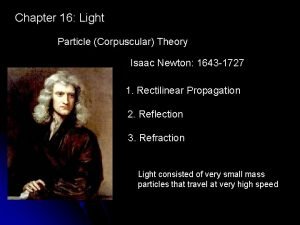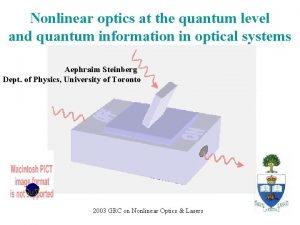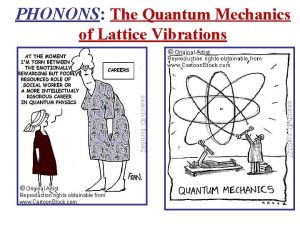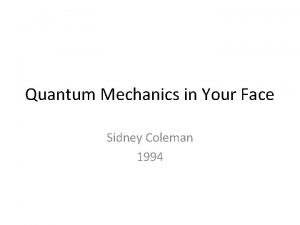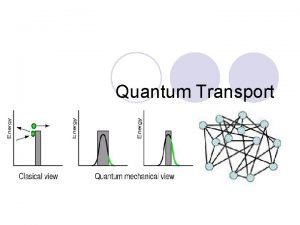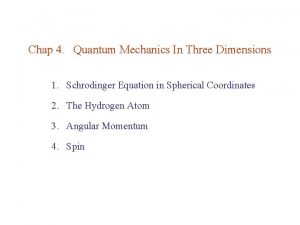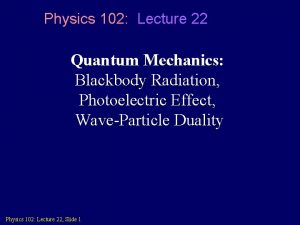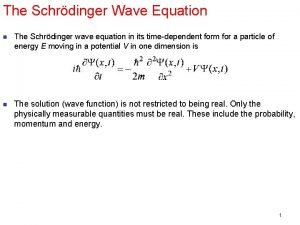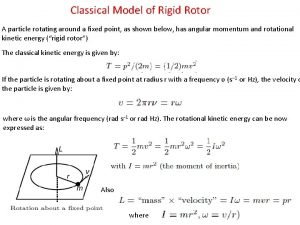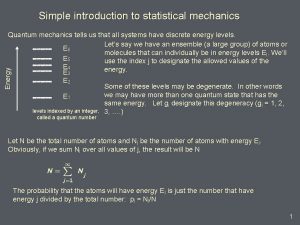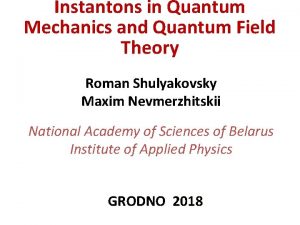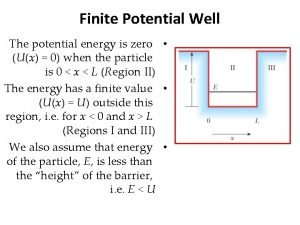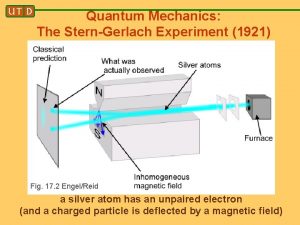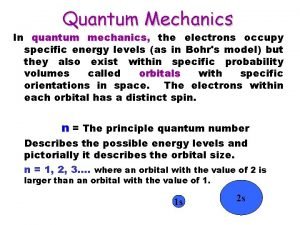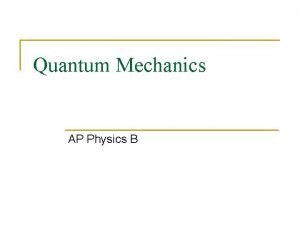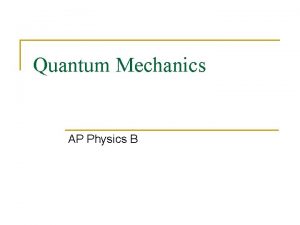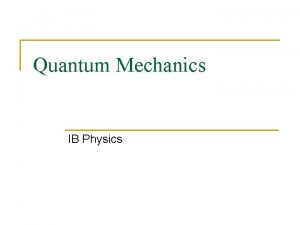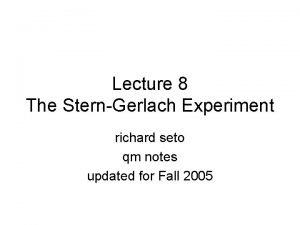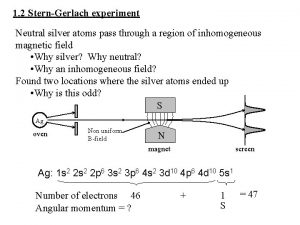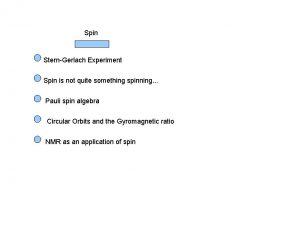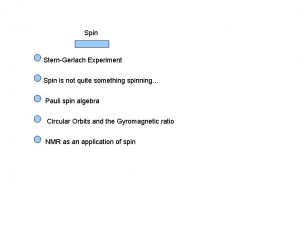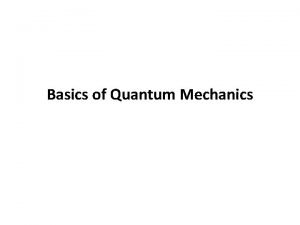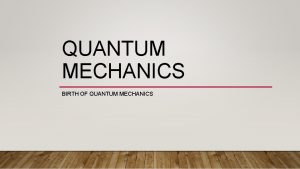Quantum Mechanics The SternGerlach Experiment 1921 Fig 17

















- Slides: 17

Quantum Mechanics: The Stern-Gerlach Experiment (1921) Fig. 17. 2 Engel/Reid a silver atom has an unpaired electron (and a charged particle is deflected by a magnetic field)

up = u down = d left = l right = r

u up = u up/down = d measurement d l left = l right = r left/right measurement r

This device measures the up/down property by sending “up” atoms one way and “down” atoms another way. But to learn the outcome you would have to put a fluorescent screen or something in the beam path: u up/down measurement d (fluorescent screen lighting up due to particle impact)

Are the up/down and left/right properties of an atom correlated? 50% No: 50% of down atoms are left and 50% are right d l left/right r 50% knowing the up/down property of an atom tells us nothing about its left/right property (and no additional information helps [no hidden variables])

Now assume a down atom emerges from the right aperture of a left/right box (50% will do so). Let us measure up/down

Now assume a down atom emerges from the right aperture of a left/right box (50% will do so). somehow the left/right box has changed the up/down value !

Now construct a more complicated apparatus the “black box” is just a fancy mirror that makes the two paths coincide (recombines them)

Use a down atom and measure left/right. Find 50% l and 50% r Note: “find” here means using this: d and this:

Use a left atom and measure up/down. Find 50% u and 50% d l

Use a down atom and measure up/down. d This device is just a fancy left/right box (it is a left/right box with a few harmless mirrors), and we know a left/right measurement scrambles the up/down property.

Use a down atom and measure up/down. Find 100% down !!! d

Let us add a movable wall that absorbs atoms d Slide the wall into place: 1. ) 50% reduction in the number of atoms emerging from the apparatus 2. ) Of the atoms that emerge, their up/down property is now scrambled: 50% u and 50% d. What can possibly be going on ?

d Consider an atom which passes through the apparatus when the sliding wall is out. Does it take route l ? No, because l atoms have 50/50 u/d statistics. d Does it take route r ? No, same reason. Can it somehow have taken both routes ? No: if we look (use a fluorescent screen) to see where the atom is inside the apparatus, we find that 50% of the time it is on route l, and 50% of the time it is on route r. We never find two atoms inside, or two halves of a single, split atom, or anything like that. There isn’t any sense in which the atom seems to be taking both routes. Can it have taken neither route? No: if we put sliding walls in place to block both routes, nothing gets through at all. But these are all the logical possibilities !

What can these atoms be doing? We use the word (which is just a name for something we don’t understand) superposition. What we say about an initially down atom which is now passing through our apparatus (with the wall out) is that it’s not on path l and not on r and not on both and not on neither, but, rather, that it’s in a superposition of being on l and being on r. And what this means (other than “none of the above”) we don’t know.

We know, by experiment, that atoms emerge from the left aperture of a left/right box if and only if they’re left atoms when they enter that box. When a down atom is fed into a left/right box, it emerges neither through the left aperture nor through the right one nor through both nor through neither. So, it follows that a down atom can’t be a left one, or a right one, or (somehow) both, or neither. To say that an atom is down must be just the same as to say that it’s in a superposition of being left and right. So what outcome can we expect of a left/right measurement? Quantum mechanics must be a probabilistic theory !!

Source: “Quantum Mechanics and Experience” by David Z Albert, Harvard University Press, 1992
 Quantum physics vs quantum mechanics
Quantum physics vs quantum mechanics Quantum physics vs quantum mechanics
Quantum physics vs quantum mechanics Kathy coover
Kathy coover Quantum eraser experiment at home
Quantum eraser experiment at home Quantum light experiment
Quantum light experiment Elitzur-vaidman bomb tester
Elitzur-vaidman bomb tester Ap physics quantum mechanics
Ap physics quantum mechanics Operator in quantum mechanics
Operator in quantum mechanics Quantum mechanics in your face
Quantum mechanics in your face Transfer matrix quantum mechanics
Transfer matrix quantum mechanics Quantum mechanics in three dimensions
Quantum mechanics in three dimensions Susan cartwright sheffield
Susan cartwright sheffield Quantum mechanics
Quantum mechanics Expectation value in quantum mechanics
Expectation value in quantum mechanics 2d rigid rotor
2d rigid rotor Introduction to quantum statistical mechanics
Introduction to quantum statistical mechanics Qft
Qft Finite potential well
Finite potential well




